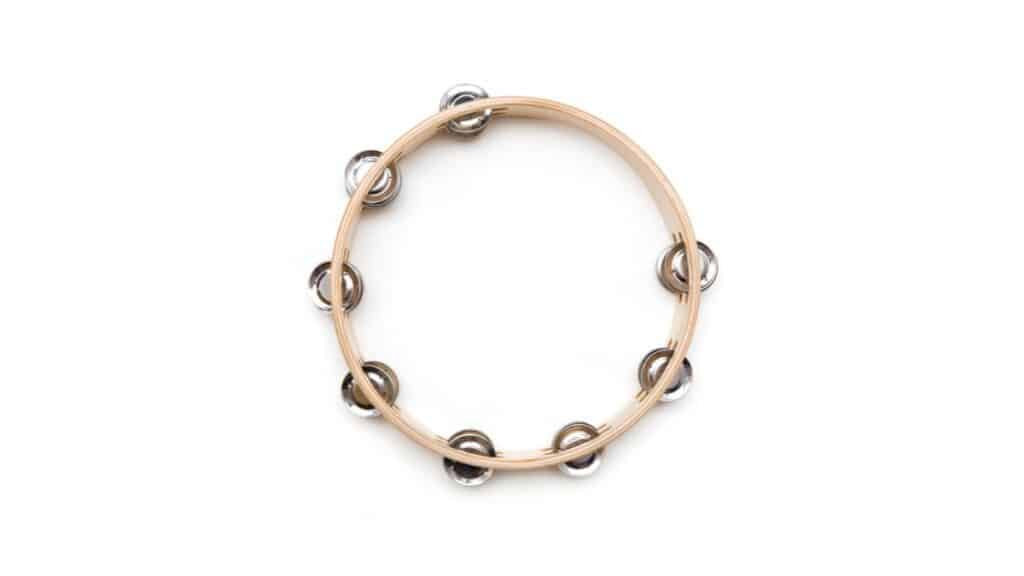Buenas días, music lovers and flamenco dancers alike!
Let’s embark on an exciting journey into the heart of Spain, exploring its rich, rhythmic, and resonant traditional musical heritage.
We’ll be uncovering the essence of Spanish culture, one instrument at a time, immersing ourselves in the unique sounds that echo through vibrant flamenco performances, passionate folk tunes, and soul-stirring religious music.
From the entrancing strums of the Flamenco Guitar to the jubilant rhythms of the Pandero, these Spanish instruments are more than tools of music; they are the voice of Spain, each narrating its own captivating story. So, are you ready? ¡Vamos!
Flamenco Guitar
The Flamenco Guitar (also known as the Spanish guitar) looks similar to a classical guitar and is the fiery soul of traditional Spanish music, pulsing with passion and spirit.
The Spanish guitar has sound is as rich and varied as Spain itself, reflecting the tumultuous history and diverse cultures of the country.
Made traditionally from cypress and spruce woods, the Spanish guitar plays with a bright, sharp tone that dances its way into the heart of the listener.
The Flamenco guitar is played with nylon strings which is what gives it such a unique tone compared to other guitar styles. The nylon strings held produce a mellow sound compared to the harder steel strings found in other guitars.
The Spanish guitar is a key instrument in Flamenco, and its percussive strums and melodic fingerpicking techniques create an atmosphere that’s both electrifying and intimate.
Castanets
Listen closely and you’ll hear the heartbeat of Spain in the rhythmic clatter of Castanets.
When it comes to percussion instruments in Spanish-speaking countries, Castanets are one of the first musical instruments that comes to mind.
These small, concave shells, made of hardwood and clicked together by the thumb or middle finger, adding a percussive flair to the music.
When in skilled hands, these musical instruments can produce a dazzling variety of rhythms, expressing everything from a joyous fiesta to a soulful duende.
They’re a staple in Flamenco and classical Spanish dances, providing a crisp, syncopated dialogue that communicates with both the music and the dancer’s movements.
Cajón
The Cajón, a box-shaped percussion instrument, is the booming voice of traditional Spanish music and a staple in percussion instruments found in Latin America and Spain.
The player sits atop this wooden wonder and uses their hands to tap out deep, resonant beats. It’s a versatile performer, able to mimic everything from a drum kit to an acoustic bass.
It may have originated in Peru, but the Cajón found a home in Spain, and is now a crucial part of modern Flamenco, lending a potent, rhythmic undercurrent that reverberates with energy and soul.
It may look like a typical instrument but when you watch musicians playing, it will surely stand out as something incredibly unique and fun.
Bandurria
The Bandurria is the sparkling gem of Spanish music, its sound as bright and lively as a Mediterranean morning.
This pear-shaped, short-necked lute has twelve strings and is usually made from a variety of woods.
It’s played with a plectrum, and the resulting melodies have a buoyant, effervescent quality that brings a distinctive charm to the music.
From folk tunes to orchestral works, the Bandurria adds a vibrant layer of sound that embodies the zest and spirit of Spain.
Tambourine
Shake it, rattle it, tap it – the Tambourine is a flexible and fun-loving character among Spanish traditional instruments.
Its resonating jingles mixed with the versatility of a drumhead create a rhythmic collage of sound. Used across various genres, from Spanish folk tunes to Flamenco, the Tambourine adds a shimmery layer of rhythm that complements both melodic and percussive elements.
It might be a supporting actor, but its role is essential, giving Spanish music an extra touch of brightness and motion.
Lute
The Lute is the graceful elder in the ensemble of Spanish instruments and is a common string instrument in Latin America.
Originating in the Middle Ages, its gentle, mellow tone brings an old-world charm to traditional Spanish music. The Lute’s curved body and numerous strings resonate with a soft, deep sound, providing a beautiful, harmonious base for melodies. While it might seem like a blast from the past, the Lute’s timeless appeal endures in folk and early music settings, telling a musical story that connects the present to the rich history of Spain.
Violin
The Violin might be a familiar face, but in the hands of Spanish musicians, it sings with a distinct voice. From the mournful strains of a Flamenco ballad to the jubilant trills of a folk dance, the Violin’s versatile range captures the full spectrum of human emotion.
Its sweet, soaring notes can take center stage, or weave into the musical fabric as part of the ensemble.
In traditional Spanish music, the Violin adds its poignant narratives and vivacious energy, painting vibrant soundscapes that reflect the passionate spirit of Spain.
Spanish Bagpipes (Gaita)
The Gaita, or Spanish Bagpipes, may surprise you. When you think of bagpipes, Spain probably isn’t the first place that comes to mind.
Yet, in the northwestern region of Galicia, bagpipes have been a musical staple for centuries. The Gaita’s melancholic drone and robust melodies resonate with the area’s Celtic roots, providing a distinct flavor to traditional Spanish music.
This fascinating instrument, with its harmonious blend of drone and chanter, carries the nostalgic whisper of the past, inviting us to a vibrant, rhythmic dance through history.
Timple
From the sunny Canary Islands comes the Timple, a small, five-stringed instrument that shines with a joyful, resonant sound.
Often likened to a ukulele, the Timple has a unique voice of its own, vibrant and full of spirit. The Timple’s high-pitched, rapid strumming adds a sparkling texture to folk songs and dances.
It’s more than an instrument; it’s an embodiment of the Canarian spirit – playful, melodic, and brimming with life.
Laud
The Laud is a pear-shaped, twelve-stringed instrument with a large, rounded back and a distinctive sound. It’s a member of the bandurria family but has a larger body and longer neck.
The Laud is typically used to play chords and bass lines in Spanish folk music, and its resonant, warm sound adds depth and richness to the musical tapestry.
This unsung hero might not always take center stage, but it’s a key player that lays the harmonic groundwork for others to shine.
Vihuela
The Vihuela is an instrument of elegance and sophistication. Resembling a guitar, but with a more rounded back, this six-stringed beauty was popular among string instruments in 15th and 16th century Spain.
Its soft, lute-like tone was adored in the royal courts, and its intricate, plucked melodies were considered the height of musical art.
Although less common today, this musical instrument is still used in early music performances, gracing the listener with a taste of Spain’s grand past.
Flamenco Box Drum
Another percussion star in the Spanish music scene, the Flamenco Box Drum, differs from the Cajón through its size, shape, and distinct sound. Shaped like a smaller, rectangular box, it’s played by striking the front face with hands or brushes.
The percussive sounds range from deep bass notes to snare-like high pitches, making it a versatile addition to Flamenco ensembles.
It might look like an ordinary box, but its rhythmic contributions are extraordinary, adding dynamic layers of sound that enrich the musical narrative.
Bongo
The Bongo drums, typically a pair of small, open-bottomed drums of different sizes, bring a rhythmic liveliness to traditional Spanish music.
Originally from Cuba, they’ve danced their way into Spanish genres, offering a light, syncopated counter-rhythm that can both support and playfully challenge the main beat.
Their high, sharp sounds cut through the music, providing an infectious rhythmic energy that can get even the most reluctant feet tapping.
Flamenco Bongo (Cajonillo)
The Flamenco Bongo, or Cajonillo, is a smaller, higher-pitched cousin of the Cajón. It consists of two small box drums joined together, and like the Cajón, it’s played by slapping the front face with the hands.
The Cajonillo’s bright, resonant sound offers a unique tonal palette that complements and contrasts with the deeper Cajón.
Its exciting rhythms add a layer of percussive complexity to Flamenco performances, making the music even more engaging and dynamic.
Psaltery (Salterio)
The Salterio, or Psaltery, is an ancient, zither-like instrument whose ethereal tones have echoed through Spanish music for centuries.
The strings are plucked with fingers or plectrums, creating a sound that’s both delicate and resonant.
In traditional Spanish music, the Salterio offers a soothing, harmonic backdrop, its notes hanging in the air like musical stardust. This instrument may be a lesser-known gem in the Spanish music scene, but it’s a window into a rich, musical past that still vibrates in the songs of today.
Harp (Arpa)
The Spanish Harp, or Arpa, carries an elegance that enchants listeners. With its grand stature and a multitude of strings, the Harp in Spain varies in size depending on the region. In the hands of a skillful musician, it can create a cascade of harmonies from soft, gentle whispers to dramatic, resonant echoes. Used in both folk and orchestral music, the Arpa’s mesmerizing sound brings an extra dimension of richness to traditional Spanish music, encapsulating the spirit and romance of the country.
Zambomba
The Zambomba is a uniquely Spanish percussion instrument often associated with holiday celebrations. Consisting of a clay or wooden pot covered with a stretched membrane, the Zambomba creates its characteristic sound when a stick inserted in the middle is rubbed. This friction drum gives off deep, resonating tones which form a rhythmic backdrop to joyous communal singing during festive periods. Despite its simplicity, the Zambomba brings a hearty, communal vibe, infusing Spanish traditional music with warmth and merriment.
Spanish Accordion
The Spanish Accordion is the life of the party, a versatile entertainer that brings a melodic and rhythmic zest to Spanish folk music. Its bellows-driven, free-reed design allows for a wide range of sounds, from soft, mellow tunes to vibrant, high-energy melodies. From the Basque Country to Galicia, different regions have distinct styles of playing, making the Spanish Accordion a symbol of the rich, diverse tapestry of Spain’s musical culture.
Pandero
The Pandero, or Spanish Tambourine, is a rhythmic companion in Spanish music. With jingles set in its frame, the Pandero produces a bright, shimmering sound when shaken or struck. This instrument is often used in folk music and religious celebrations, providing a steady beat or punctuating the music with festive, rhythmic accents. Small but mighty, the Pandero adds a joyous, energetic vibe, making it a beloved part of Spain’s musical heritage.
Conclusion: The Musical Instruments in Spanish Traditional Music
And thus, our rhythmic ride through Spain’s musical landscape draws to a close. Each instrument we’ve met along the way – the harmonic Harp, the vivacious Violin, the pulsing Palillos, and others – brings to life a facet of Spanish culture, capturing its essence in the language of music. These musical instruments, though diverse in their sounds and origins, unite to create a symphony that is inherently Spanish, a soundtrack that narrates the story of a nation known for its passion, spirit, and vitality. As we depart from this journey, let’s carry these captivating melodies with us, keeping the rhythm of Spain alive in our hearts. ¡Hasta la próxima!







